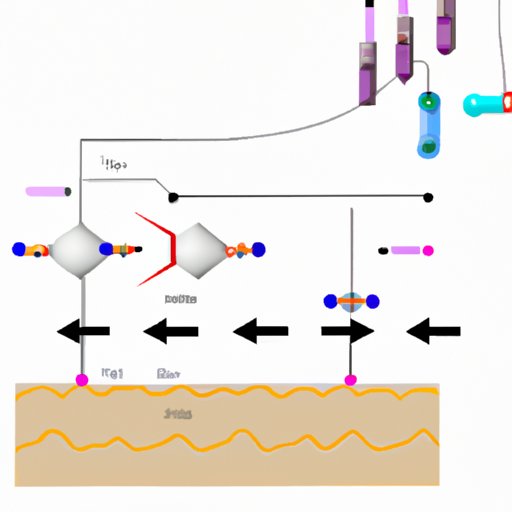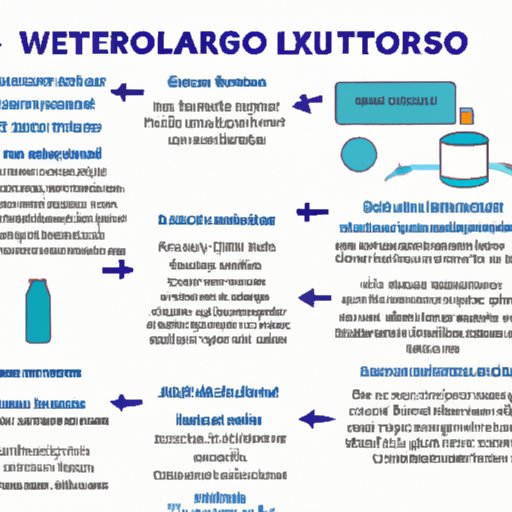Introduction
Xarelto is a brand-name prescription medication used to treat and prevent dangerous blood clots that can lead to strokes and other complications. It is an anticoagulant, or “blood thinner”, that helps keep blood flowing smoothly throughout the body. Xarelto is used to treat and prevent deep vein thrombosis (DVT) and pulmonary embolism (PE), two conditions that involve the formation of blood clots in the veins and arteries. Xarelto is also used to reduce the risk of stroke and systemic embolism in people with nonvalvular atrial fibrillation (AFib).

Exploring the Mechanism of Action of Xarelto
Xarelto works by blocking the enzyme that is responsible for clotting, known as Factor Xa. By preventing this enzyme from working, Xarelto helps to keep the blood thin and prevents clots from forming. Xarelto is taken orally, usually once a day, and has a rapid onset of action. It is important to note that Xarelto does not dissolve existing clots; it only helps to prevent new ones from forming.
Xarelto interacts with many other medications, including aspirin, ibuprofen, warfarin, and other anti-platelet drugs. People taking Xarelto should talk to their doctor about any medications they are taking before starting Xarelto. It is also important to tell your doctor if you have any bleeding disorders or kidney problems, as these can affect how Xarelto works in the body.

An Overview of How Xarelto Works in the Body
Xarelto works by blocking the activity of the Factor Xa enzyme, which is responsible for the formation of blood clots. This helps to keep the blood thin and prevents clots from forming. In people with nonvalvular AFib, Xarelto reduces the risk of stroke by more than 50%. It is also effective in reducing the risk of recurrent DVT and PE, and in treating and preventing DVT and PE.
Xarelto is typically prescribed as part of a comprehensive treatment plan that includes lifestyle modifications such as quitting smoking, exercising regularly, and maintaining a healthy diet. Xarelto can be combined with other medications to reduce the risk of stroke and other complications associated with nonvalvular AFib.
Understanding the Role of Xarelto in Thromboembolic Disorders
Xarelto is often prescribed to treat and prevent thromboembolic disorders, which are conditions caused by the formation of blood clots in the veins and arteries. These disorders can lead to serious complications such as strokes and heart attacks. Xarelto helps to prevent the formation of these clots by blocking the activity of the Factor Xa enzyme. This helps to keep the blood thin and prevents clots from forming.
Xarelto is also used to treat and prevent DVT and PE, two conditions that involve the formation of blood clots in the veins and arteries. Xarelto helps to reduce the risk of stroke and systemic embolism in people with nonvalvular AFib. It is important to note that Xarelto does not dissolve existing clots; it only helps to prevent new ones from forming.
A Breakdown of Xarelto’s Active Ingredient and Its Effectiveness
The active ingredient in Xarelto is rivaroxaban, an oral direct factor Xa inhibitor. This means that it blocks the activity of the Factor Xa enzyme, helping to keep the blood thin and preventing clots from forming. Studies have shown that Xarelto is effective in reducing the risk of stroke and other complications associated with nonvalvular AFib. It is also effective in reducing the risk of recurrent DVT and PE, and in treating and preventing DVT and PE.
Xarelto is generally well tolerated and has few side effects. The most common side effects include nausea, headache, dizziness, and rash. It is important to talk to your doctor about any potential side effects before starting Xarelto.
Conclusion
Xarelto is a prescription medication used to treat and prevent dangerous blood clots that can lead to strokes and other complications. It works by blocking the activity of the Factor Xa enzyme, which is responsible for the formation of blood clots. This helps to keep the blood thin and prevents clots from forming. Xarelto is effective in reducing the risk of stroke and other complications associated with nonvalvular AFib, and in treating and preventing DVT and PE. It is generally well tolerated and has few side effects. However, it is important to talk to your doctor about any potential side effects before starting Xarelto.
In conclusion, Xarelto is an effective medication for preventing and treating thromboembolic disorders. It is important to understand how Xarelto works in the body and to discuss any potential side effects with your doctor before starting Xarelto. With proper use, Xarelto can help reduce the risk of stroke and other complications associated with thromboembolic disorders.
(Note: Is this article not meeting your expectations? Do you have knowledge or insights to share? Unlock new opportunities and expand your reach by joining our authors team. Click Registration to join us and share your expertise with our readers.)
